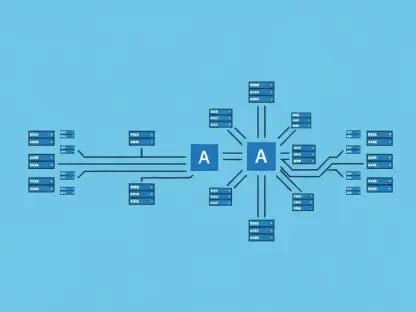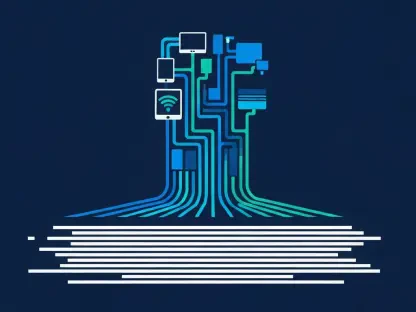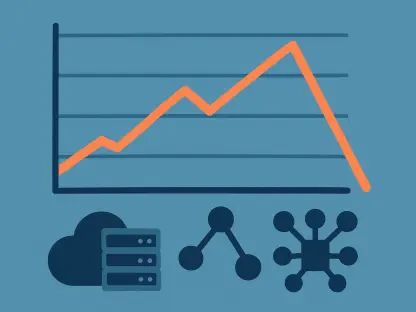In today’s rapidly advancing technological landscape, the capability of machines to understand and generate human language has become a critical frontier. At the heart of this progress are Large Language Models (LLMs), which are increasingly integrated across various applications. However, with their transformative potential comes a complex blend of promise and challenge. Companies worldwide are pressing forward with the integration of LLMs, yet they are grappling with their inherent unpredictability. This review delves into the intricate dynamics surrounding LLM reliability, shedding light on their core features, current challenges, and future pathways.
Unpacking the Structure of Large Language Models
LLMs fundamentally operate by processing and executing language patterns based on vast datasets, encompassing millions of texts for training. Derived from advanced architectures like transformers, these models capture relationships between words and contexts, delivering coherent language outputs. Their emergence marks a pivotal moment in AI evolution, transitioning from rudimentary applications to sophisticated systems embedded in businesses and consumer technologies alike. The scalability and adaptability of LLMs enable them to influence areas ranging from customer service automation to creative content development, underscoring their growing significance.
Key Technological Elements and Features
The Role of Non-Determinism
Non-determinism is a defining attribute of LLMs, producing varying responses for the same input due to probabilistic decision-making processes. Although this quality enables creativity and flexibility, it challenges system reliability. In scenarios demanding consistent outputs, the unpredictable nature of LLMs necessitates advanced mechanisms to ensure efficacy and accuracy. Understanding and managing these technical nuances is crucial for maintaining the reliability of AI-powered systems across sectors.
Guardrails and Input Filtering
As dependable outputs are vital, robust frameworks like guardrails are implemented to monitor LLM behavior. These mechanisms serve to filter unwanted inputs or mitigate potential inaccuracies, ensuring the model adheres to predefined behavioral constraints. The deployment of such strategies not only protects against errors but also enhances user trust, as it becomes pivotal in sectors where outputs can significantly impact operations or customer experiences.
Progress and Emerging Trends
Recent advancements in LLMs have seen various enhancements in their architecture, enabling improved reliability. These include sophisticated techniques like retrieval-augmented generation (RAG), which grounds generated responses on verified data to mitigate error rates. Additionally, LLMs continue to be seamlessly integrated into diverse industry workflows, from healthcare diagnostics to personalized marketing, reflecting an accelerated trend toward their universal application. These trends point to a continued push for more reliable and robust AI solutions tailored for varied industrial demands.
Practical Implementations Across Industries
LLMs find applications in numerous fields with distinct implementation strategies. For example, in finance, they are used for real-time analysis and communication tasks, enhancing productivity while maintaining operational accuracy. In publishing, they support content creation by generating drafts or summaries, showcasing adaptability. Notable implementations include chatbots for customer engagement, demonstrating LLMs’ reliability in addressing routine inquiries swiftly and effectively.
Unraveling the Challenges
Challenges accompanying LLM deployments are multifaceted, involving technical and operational complexities. The nature of non-determinism requires sophisticated oversight mechanisms to ensure consistent results, while market dynamics demand cost-effective, scalable solutions. Efforts to surmount these challenges often involve collaborative innovation, with tech firms spearheading research into advanced LLM architectures aimed at overcoming existing limitations.
Future Prospects
Looking forward, the trajectory of LLM technology suggests promising advancements in increasing model accuracy and integrative capabilities. Projections include refined algorithms that further minimize error rates, alongside improved tools for user control over AI interactions. This evolution could significantly enhance LLM roles in creating more intelligent systems capable of handling complex tasks autonomously, transforming industry landscapes.
Assessments and Conclusions
Assessing the current state of LLM technology reveals a complex interplay between innovation and reliability. While significant progress has been made, continuous improvements are necessary to fully harness the technology’s potential. By investing in advanced safety mechanisms and addressing core limitations, enterprises are well-positioned to maximize the benefits of LLM integration. The ongoing dedication to refining methodology and enhancing framework robustness will determine the future impact of LLM on industries and society.









